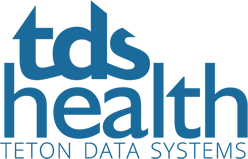Clinical Documentation Improvement: Principles and Practice

Description
Clinical documentation is the foundation of every patient health record. This book clearly defines the term, explains its importance, and presents an objective and uniform set of principles that can be applied reliably in any healthcare organization ’s clinical documentation improvement (CDI) program. The author identifies the key users of clinical documentation—from patients to clinicians to coding professionals to reimbursement entities—and throughout the book addresses how a strong CDI program affects them all.
Part 1 addresses the fundamentals of clinical documentation—assessing the current quality of the organization’s documentation and making the decision to implement a new program or improve the current one. Part 2 describes clinical documentation program implementation—from staffing and training through querying physicians, analyzing program data, and ensuring program compliance. Finally, Part 3 recommends and explains a process for growing and refining a clinical documentation program.
Key Features
- • Expands on how the transition to ICD-10 will have an impact on the CDI process, highlighting specific coding scenarios
- • Includes a new chapter on critical thinking for physicians, nurses, clinical documentation specialists, and coders
- • Offers extensive guidance on CDI program analytics and their importance to a sustainable program
- • New material including the latest on CDI technology solutions, an example query set, and work plans for CDI program implementation, APR-DRG CDI program, and denials management
- • Additional guidance on CDI for APR-DRG and quality scoring
- • Online appendices including an example presentation on physician education and engagement and strategy
Doody's Reviews
Quotes, Reviews or Testimonials
"Designing and implementing clinical documentation improvement programs are critical components of managing health information for any healthcare organization. This book presents uniform principles for evaluating and improving clinical documentation as well as demonstrating the importance of CDI programs. It provides up-to-date information on the collaboration needed for ensuring quality clinical documentation in today's EHR systems, the importance of data analytics, and the use of CDI technology tools. It is a valuable resource for anyone who has a role or interest in CDI."
-- Linda Hyde, RHIA (Hyde Consulting) Doody's Review
Audience
This title is suitable for anyone who is involved in developing or maintaining a CDI system. It is also an appropriate book for educational programs that are introducing students to the need for and concepts behind CDI programs.

















